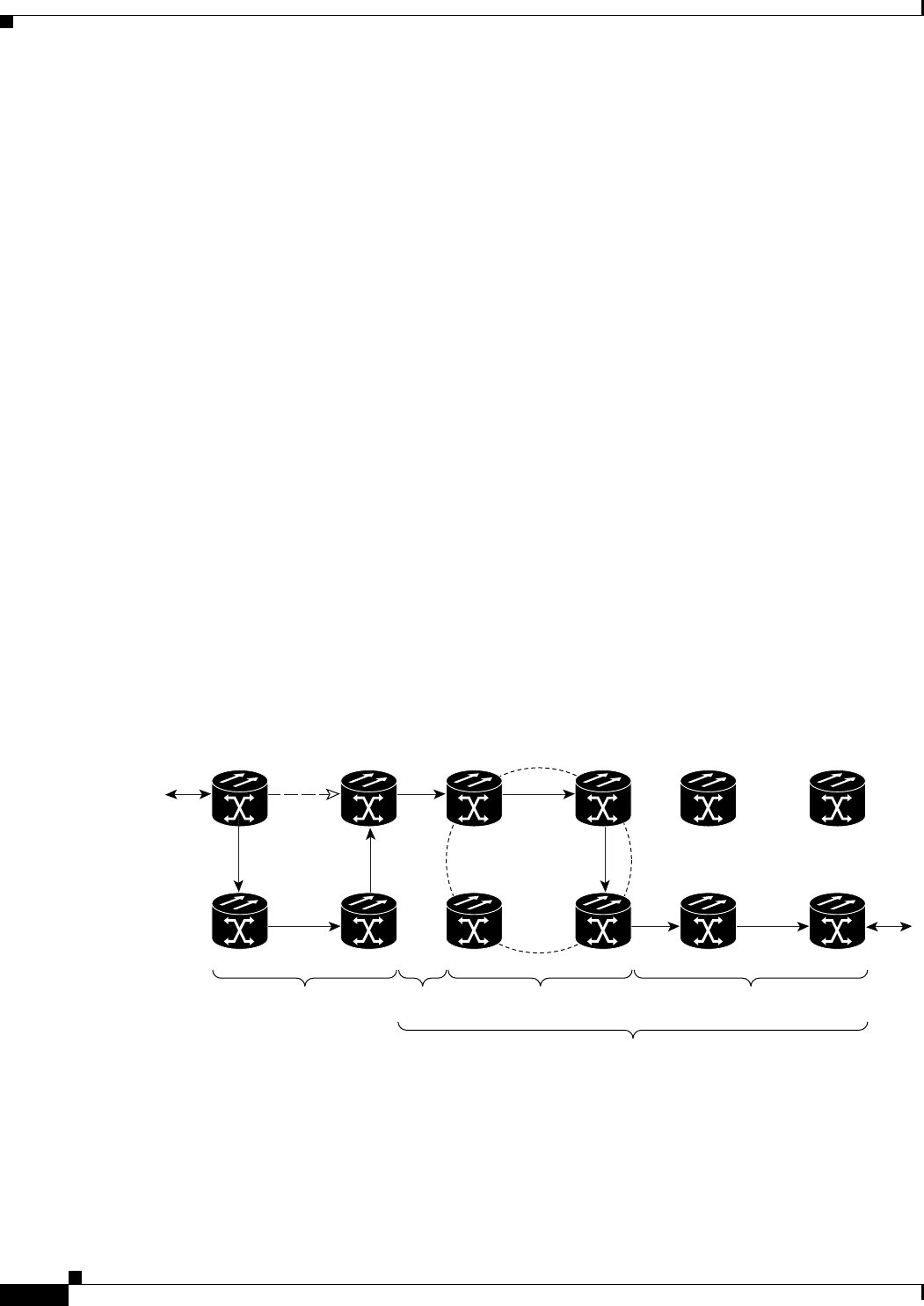user manual
Table Of Contents
- Cisco ONS 15454 SDH Reference Manual
- Contents
- About this Guide
- Shelf and FMEC Hardware
- Common Control Cards
- Electrical Cards
- Optical Cards
- Ethernet Cards
- Storage Access Networking Cards
- Card Protection
- Cisco Transport Controller Operation
- Security and Timing
- Circuits and Tunnels
- SDH Topologies and Upgrades
- CTC Network Connectivity
- Alarm Monitoring and Management
- Ethernet Operation
- Hardware Specifications
- A.1 Shelf Specifications
- A.2 SFP Specifications
- A.3 General Card Specifications
- A.4 Common Control Card Specifications
- A.5 Electrical Card and FMEC Specifications
- A.5.1 E1-N-14 Card Specifications
- A.5.2 E1-42 Card Specifications
- A.5.3 E3-12 Card Specifications
- A.5.4 DS3i-N-12 Card Specifications
- A.5.5 STM1E-12 Card Specifications
- A.5.6 BLANK Card
- A.5.7 FMEC-E1 Specifications
- A.5.8 FMEC-DS1/E1 Card Specifications
- A.5.9 FMEC E1-120NP Card Specifications
- A.5.10 FMEC E1-120PROA Card Specifications
- A.5.11 FMEC E1-120PROB Card Specifications
- A.5.12 E1-75/120 Impedance Conversion Panel Specifications
- A.5.13 FMEC-E3/DS3 Card Specifications
- A.5.14 FMEC STM1E 1:1 Card Specifications
- A.5.15 FMEC-BLANK Card Specifications
- A.5.16 MIC-A/P Card Specifications
- A.5.17 MIC-C/T/P Card Specifications
- A.6 Optical Card Specifications
- A.6.1 OC3 IR 4/STM1 SH 1310 Card Specifications
- A.6.2 OC3 IR/STM1 SH 1310-8 Card Specifications
- A.6.3 OC12 IR/STM4 SH 1310 Card Specifications
- A.6.4 OC12 LR/STM4 LH 1310 Card Specifications
- A.6.5 OC12 LR/STM4 LH 1550 Card Specifications
- A.6.6 OC12 IR/STM4 SH 1310-4 Card Specifications
- A.6.7 OC48 IR/STM16 SH AS 1310 Card Specifications
- A.6.8 OC48 LR/STM16 LH AS 1550 Card Specifications
- A.6.9 OC48 ELR/STM16 EH 100 GHz Card Specifications
- A.6.10 OC192 SR/STM64 IO 1310 Card Specifications
- A.6.11 OC192 IR/STM64 SH 1550 Card Specifications
- A.6.12 OC192 LR/STM64 LH 1550 Card Specifications
- A.6.13 OC192 LR/STM64 LH ITU 15xx.xx Card Specifications
- A.7 Ethernet Card Specifications
- A.8 Storage Access Networking Card Specifications
- Administrative and Service States
- Network Element Defaults
- Index

10-18
Cisco ONS 15454 SDH Reference Manual, R5.0
April 2008
Chapter 10 Circuits and Tunnels
10.12 Manual Circuit Routing
• For point-to-point (straight) Ethernet circuits, only VC endpoints can be specified as multiple
sources or drops.
For bidirectional circuits, CTC creates an SNCP connection at the source node that allows traffic to be
selected from one of the two sources on the ONS 15454 SDH network. If you check the Fully Path
Protected option during circuit creation, traffic is protected within the ONS 15454 SDH network. At the
destination, another SNCP connection is created to bridge traffic from the ONS 15454 SDH network to
the two destinations. A similar but opposite path exists for the reverse traffic flowing from the
destinations to the sources. For unidirectional circuits, an SNCP drop-and-continue connection is created
at the source node.
10.12 Manual Circuit Routing
Routing circuits manually allows you to:
• Choose a specific path, not necessarily the shortest path.
• Choose a specific VC4/VC3/TUG3/TUG2/VC12 on each link along the route.
• Create a shared packet ring for multicard EtherSwitch circuits.
• Choose a protected path for multicard EtherSwitch circuits, allowing virtual SNCP segments.
CTC imposes the following rules on manual routes:
• All circuits, except multicard EtherSwitch circuits in a shared packet ring, should have links with a
direction that flows from source to destination. This is true for multicard EtherSwitch circuits that
are not in a shared packet ring.
• If you enabled Fully Path Protected, choose a diverse protect (alternate) path for every unprotected
segment (Figure 10-7).
Figure 10-7 Alternate Paths for Virtual SNCP Segments
•
For multicard EtherSwitch circuits, the Fully Path Protected option is ignored.
• For a node that has an SNCP selector based on the links chosen, the input links to the SNCP selectors
cannot be 1+1 or MS-SPRing protected (Figure 10-8). The same rule applies at the SNCP bridge.
83949
MS-SPRing
1+1 1+1
1+1
Two way Two way
Two way Two way
Node 8Node 7
Node 5 Node 6
SNCP SNCP
Two wayTwo way
Node 4Node 3
Node 1 Node 2
Two way
Node 12Node 11
Node 9 Node 10
Source
Path Segment 1
SNCP/mesh
protected
Needs alternate path
from N1 to N2
Drop
Path Segment 3
MS-SPRing protected
Path Segment 2
1+1 protected
Path Segment 4
1+1 protected
No need for alternate path










